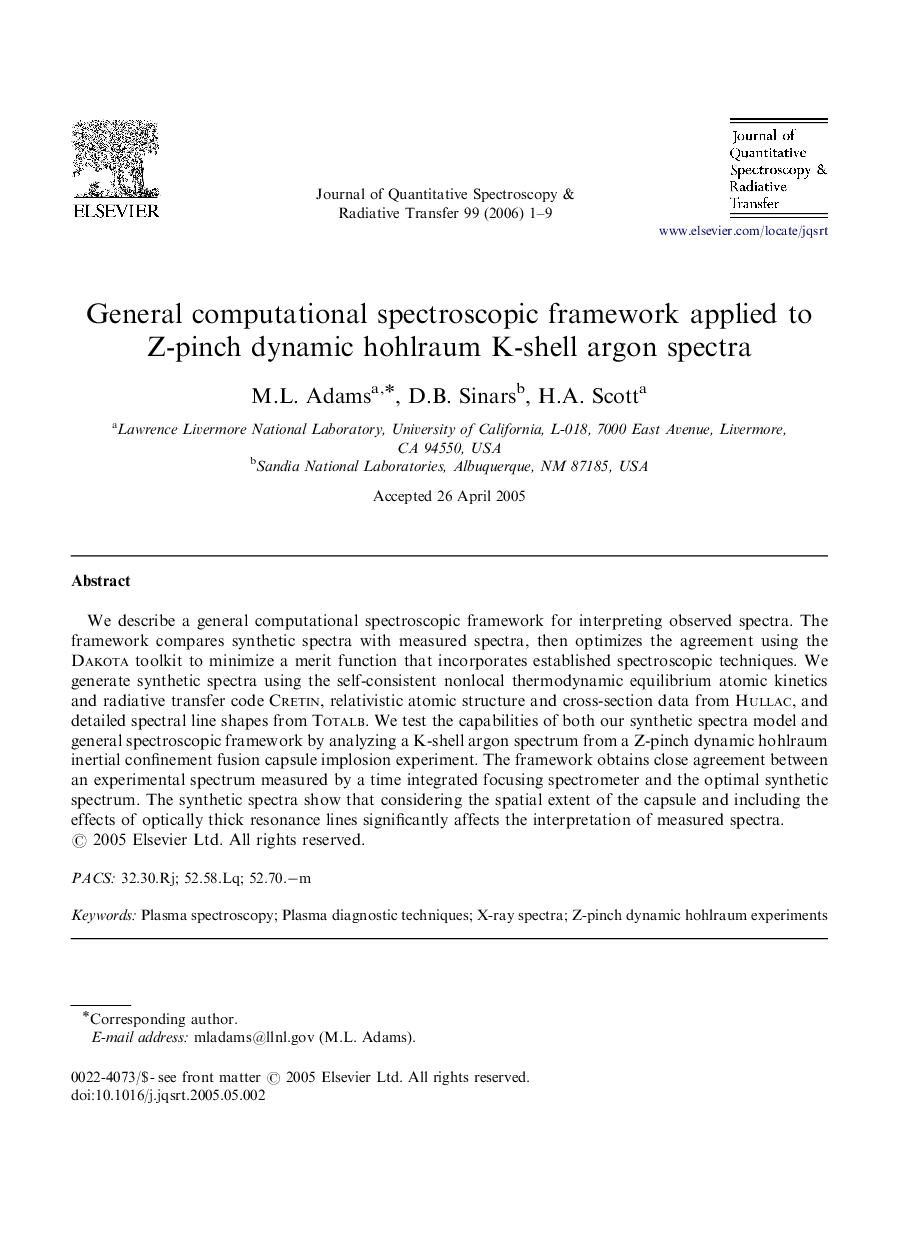| Article ID | Journal | Published Year | Pages | File Type |
|---|---|---|---|---|
| 5431078 | Journal of Quantitative Spectroscopy and Radiative Transfer | 2006 | 9 Pages |
We describe a general computational spectroscopic framework for interpreting observed spectra. The framework compares synthetic spectra with measured spectra, then optimizes the agreement using the Dakota toolkit to minimize a merit function that incorporates established spectroscopic techniques. We generate synthetic spectra using the self-consistent nonlocal thermodynamic equilibrium atomic kinetics and radiative transfer code Cretin, relativistic atomic structure and cross-section data from Hullac, and detailed spectral line shapes from Totalb. We test the capabilities of both our synthetic spectra model and general spectroscopic framework by analyzing a K-shell argon spectrum from a Z-pinch dynamic hohlraum inertial confinement fusion capsule implosion experiment. The framework obtains close agreement between an experimental spectrum measured by a time integrated focusing spectrometer and the optimal synthetic spectrum. The synthetic spectra show that considering the spatial extent of the capsule and including the effects of optically thick resonance lines significantly affects the interpretation of measured spectra.
